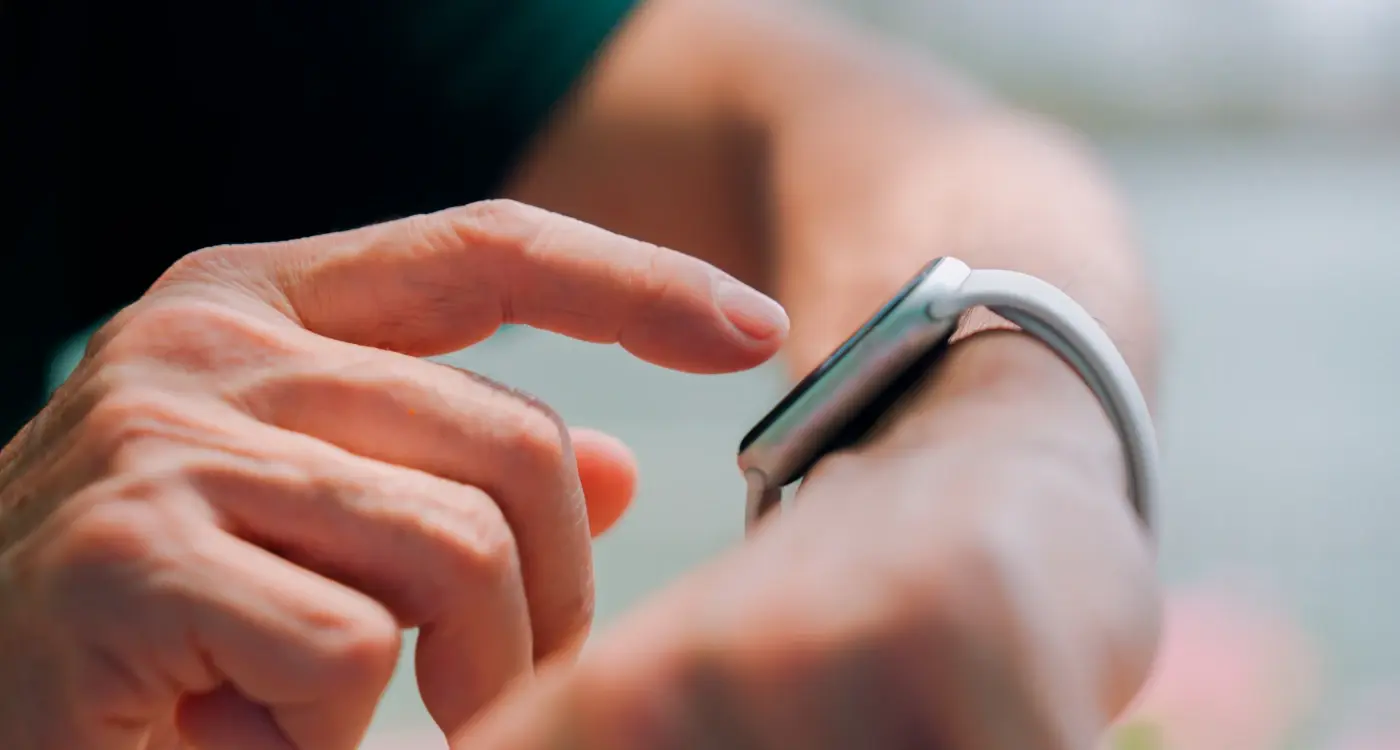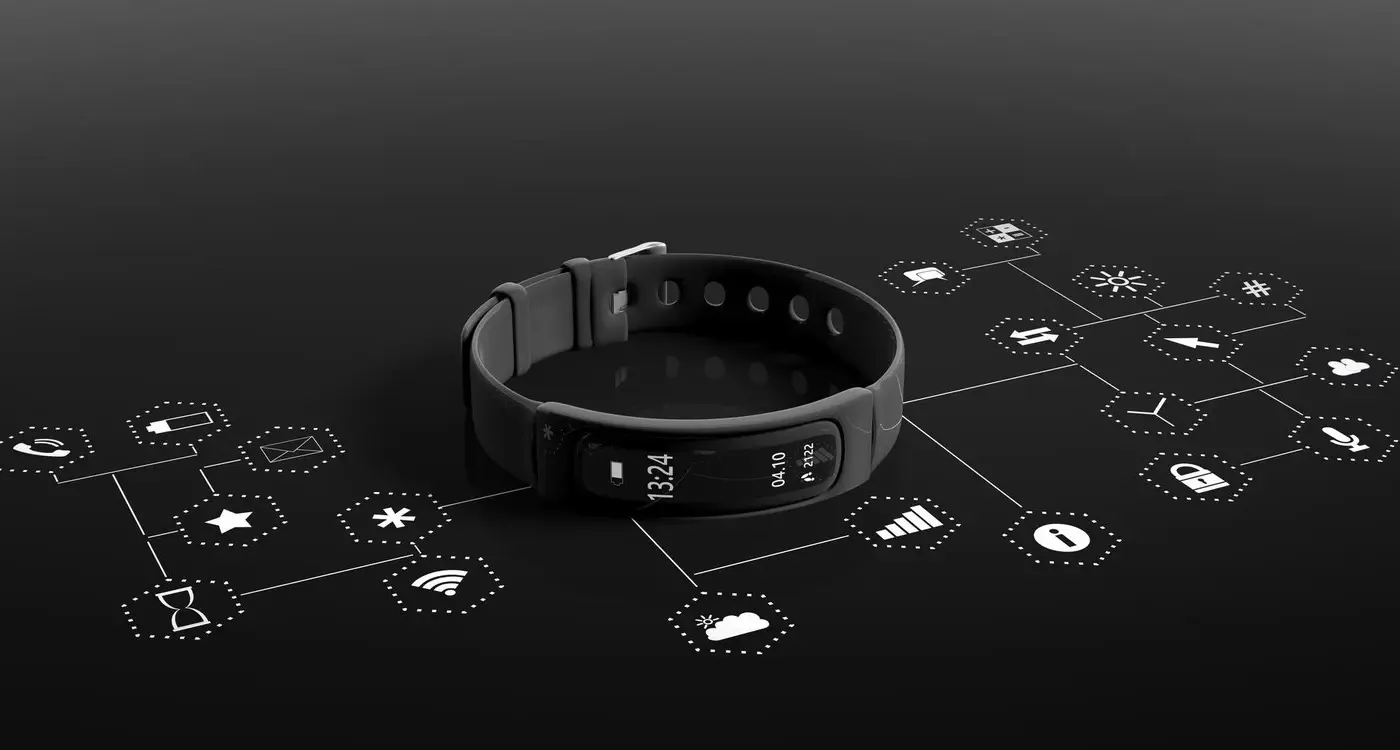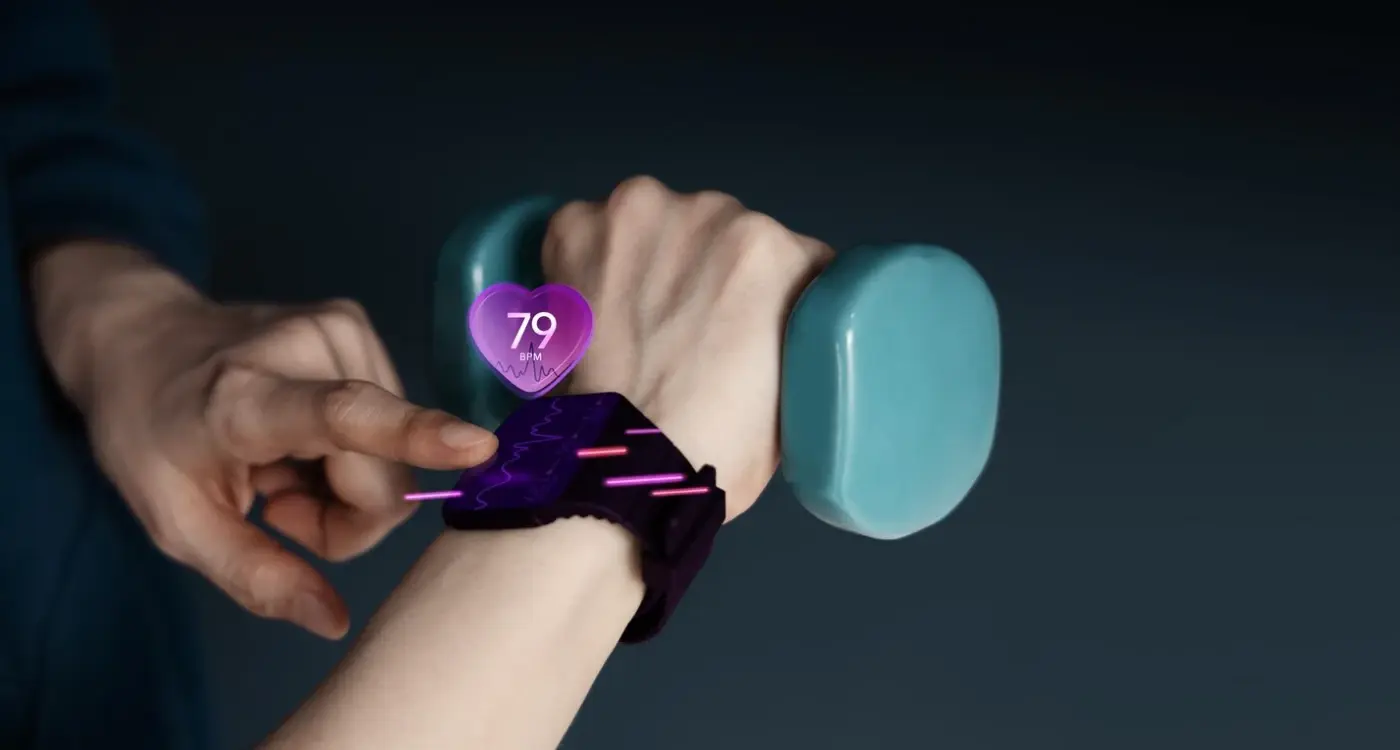How Do You Choose the Right Wearable Platform for Your App?
When was the last time you stopped to think about how many different screens people interact with throughout their day? We've got smartphones, tablets, laptops—and now wearables are becoming just as common. As someone who's been developing apps across various platforms for years, I can tell you that wearable app development is one of the most exciting frontiers we're working in right now.
But here's the thing—choosing the right wearable platform for your app isn't as straightforward as picking between iOS and Android for mobile development. The wearable space is fragmented in ways that would make your head spin. You've got Apple Watch dominating the smartwatch market, but then there's Wear OS trying to catch up, Samsung with its Tizen-based Galaxy Watch series, and dozens of fitness tracker platforms each with their own quirks and limitations.
The biggest mistake I see developers make is treating wearable apps like tiny smartphone apps—they're completely different beasts that require a fundamentally different approach
I've seen brilliant app concepts fail miserably because the team picked the wrong platform, and I've watched simple ideas become hugely successful because they matched perfectly with their chosen wearable OS. The decision you make about which wearable platform to target will affect everything from your development timeline and budget to your app's performance and user adoption rates. It's not just about technical capabilities either—you need to consider your target audience, the type of app you're building, and honestly, what kind of development headaches you're prepared to deal with! Let me walk you through everything you need to know to make this choice with confidence.
Understanding Wearable Platform Basics
Right, let's get into the nuts and bolts of wearable platforms. After years of building apps for everything from basic fitness trackers to sophisticated smartwatches, I can tell you that understanding these platforms is nothing like understanding mobile—its a completely different beast.
The first thing you need to wrap your head around is that wearables aren't just tiny phones strapped to your wrist. They have their own operating systems, their own development environments, and honestly, their own set of headaches! The main players you'll encounter are watchOS for Apple Watch, Wear OS for Android-compatible devices, and then a whole bunch of proprietary systems from companies like Fitbit, Garmin, and Samsung.
Key Platform Components
Each wearable platform has four main components that you need to understand before you start coding:
- The operating system that runs on the device itself
- The companion app framework for the paired smartphone
- The development SDK and tools
- The data synchronisation layer between device and phone
But here's the thing—and this catches a lot of developers off guard—most wearable apps aren't standalone. They work in partnership with a companion app on the user's phone. The watch handles the quick interactions, notifications, and data collection, while the phone does the heavy lifting for processing and storage.
Platform Architecture Differences
What makes this tricky is that each platform handles this relationship differently. Apple's approach is tightly integrated but locked to iOS devices only. Wear OS tries to be more flexible but can be inconsistent across different hardware manufacturers. And don't get me started on the fitness tracker platforms—they're often completely closed ecosystems with limited third-party development options.
The key is understanding these relationships before you choose your platform, because it'll determine everything from your development timeline to your potential user base.
Popular Smartwatch Platforms Explained
Right, let's break down the big players in the smartwatch world. When I started developing for wearables, there were about six different platforms all fighting for market share—it was a bit mad really. Now things have settled down to a few main contenders, which honestly makes our lives much easier as developers.
Apple Watch runs on watchOS and it's the clear market leader in most regions. The development tools are solid, the user base is engaged, and people actually spend money on apps. But here's the thing—you're locked into the Apple ecosystem completely. Your users need an iPhone, and you need to play by Apple's rules. The upside? The hardware is consistent and the performance is reliable across different watch models.
Start with Apple Watch if you're new to wearable development. The documentation is excellent and the user base is most likely to actually use third-party apps.
Wear OS (Google's smartwatch platform) is the main alternative, running on devices from Samsung, Fossil, and others. It's more open than Apple's approach, which means more flexibility but also more fragmentation. Different manufacturers add their own touches, so testing becomes more complex. The user engagement tends to be lower than Apple Watch, but you're reaching Android users who otherwise wouldn't have access to your app.
Platform Comparison Overview
- Apple watchOS: Best user engagement, premium market, iPhone required
- Wear OS: Android integration, multiple hardware partners, varied performance
- Samsung Tizen: Strong in fitness features, limited to Samsung devices
- Fitbit OS: Health-focused users, simpler development model
Samsung's Tizen platform deserves a mention too, especially for fitness-focused apps. The Galaxy Watch series has a loyal following, and Samsung's health sensors are genuinely impressive. However, you're dealing with a smaller user base and Samsung-specific development requirements.
Fitness Tracker Platform Options
Right, let's talk about fitness trackers specifically—they're a different beast entirely from smartwatches. I mean, we're dealing with devices that are laser-focused on health and fitness data, which means the development approach is quite different too.
Fitbit's platform has been the go-to choice for years now, and honestly? It's still one of the most reliable options out there. Their SDK gives you access to heart rate data, step counting, sleep tracking—all the good stuff. The user base is massive and they're genuinely engaged with fitness apps. But here's the thing: since Google acquired Fitbit, there's been some uncertainty about the platform's future direction. Still worth considering though, especially if your app focuses on fitness communities or social features.
Garmin and Specialized Trackers
Garmin's Connect IQ platform is where things get interesting for serious fitness apps. These users aren't messing about—they want detailed metrics, GPS tracking, and proper athletic performance data. The development tools are solid, but you'll need to understand that Garmin users expect a certain level of sophistication. They're not looking for casual step counters; they want training insights and performance analytics.
Then you've got the smaller players like Polar and Suunto. Niche markets, but bloody dedicated ones. If your app serves specific sports or professional athletes, these platforms might be perfect. The user numbers are lower, but the engagement rates? Through the roof.
The key with fitness trackers is understanding that users are goal-oriented. They're not browsing apps for entertainment—they want tools that help them achieve specific fitness outcomes. Your app needs to integrate seamlessly with their existing routines and provide genuine value, not just another dashboard of numbers.
Development Tools and SDKs
Right, let's talk about the actual tools you'll need to build your wearable app. After years of working with different wearable platforms, I can tell you that the quality of development tools can make or break your project timeline—and honestly, your sanity too!
Apple's WatchKit SDK is probably the most mature option out there. It integrates seamlessly with Xcode, which means if you're already building iOS apps, you're halfway there. The debugging tools are solid, the documentation is comprehensive (mostly), and Apple provides decent sample code to get you started. But here's the thing—you're locked into their ecosystem completely.
Android and Cross-Platform Options
Wear OS development uses the standard Android Studio setup, but with wearable-specific libraries. The tools work fine, but I've found the emulator can be a bit sluggish when testing complex interactions. Google's documentation has improved over the years, though it still feels scattered compared to Apple's approach.
For fitness trackers, you're looking at platform-specific SDKs from Fitbit, Garmin, and others. Each has its own quirks and limitations—Fitbit's tools are quite user-friendly, whilst Garmin's are more powerful but steeper to learn.
The biggest mistake developers make is trying to port their phone app directly to wearables without understanding the platform constraints and user context.
Cross-platform solutions like React Native have wearable support, but it's limited. You can build basic apps, but don't expect to access all the native features that make wearables special. Sometimes the native route is just better, even if it means more work upfront. The performance difference is noticeable, particularly for apps that need quick interactions or sensor data processing.
Designing for wearables is honestly one of the most challenging things you'll face as an app developer. I mean, you're working with screens that are tiny—sometimes just a couple of inches across—and users who are literally on the move. It's a completely different world from mobile phones, and what works on a smartphone will almost certainly fail on a wearable device.
The golden rule I've learned over the years? Less is always more. You've got maybe 3-5 seconds of a user's attention before they lower their wrist or move on. That means your interface needs to be scannable at a glance. Think big buttons, high contrast text, and interactions that can be completed in just a tap or two. I've seen so many apps try to cram desktop-level functionality onto a watch face—it never works.
Designing for Context and Movement
Here's something that catches developers off guard: people use wearables while they're doing other things. They might be running, cooking, or in a meeting. Your app needs to work when someone's arm is bouncing around or when they're trying to be discrete. Voice commands and haptic feedback become your best friends here; visual feedback alone isn't enough.
Battery life is another major consideration that affects UX design. Every animation, every background process, every bright colour you choose impacts how long the device lasts. Users will literally uninstall apps that drain their battery too quickly—I've seen it happen countless times. Smart use of dark themes, minimal animations, and efficient data syncing can make the difference between an app that users love and one that gets deleted after a week.
Input Methods and Navigation
Touch gestures on wearables are completely different from phones. The screens are smaller, fingers are bigger relative to the interface, and precision is much harder to achieve. Swipe gestures work well, but tiny buttons? Forget about it. The crown on Apple Watches, rotating bezels on Samsung devices—these hardware controls are often more reliable than touch for navigation.
Don't try to replicate your phone app's navigation structure. Wearables work best with simple, linear flows and clear visual hierarchy. Think notifications, quick actions, and glanceable information rather than complex user journeys.
Platform Performance and Hardware Limitations
Right, let's talk about the elephant in the room—wearable devices are tiny computers strapped to people's wrists, and they come with some serious hardware constraints that'll make your smartphone development experience look like a walk in the park.
Battery life is honestly the biggest headache you'll face when developing for any wearable platform. We're talking about devices that need to last all day (ideally longer) while running your app, tracking heart rate, receiving notifications, and doing a dozen other things. Your beautifully designed app that constantly syncs data or uses GPS tracking? It's going to drain that battery faster than you can say "low power mode".
Processing power is another reality check. Even the latest Apple Watch or Wear OS device has roughly the same computing power as a decent smartphone from several years ago. Complex animations, heavy data processing, or trying to run multiple background tasks simultaneously will bring these devices to their knees.
Storage and Memory Constraints
Storage space on wearables is precious—we're talking megabytes, not gigabytes. Most smartwatch platforms limit individual apps to somewhere between 8MB and 50MB of storage space. That's not much when you factor in your app's code, assets, and any local data storage needs.
Always test your wearable app on the actual hardware, not just simulators. The performance difference between a simulator running on your laptop and a real device with limited RAM and processing power can be shocking.
- Apple Watch Series 8: 32GB storage, 1GB RAM
- Samsung Galaxy Watch5: 16GB storage, 1.5GB RAM
- Fitbit Versa 4: 6GB+ storage, varies by model
- Garmin Venu 2: 8GB storage, limited RAM specs
The key to successful wearable development is designing with these limitations from day one, not trying to squeeze a smartphone app into a watch-sized container.
Right, let's talk numbers because they actually matter when you're deciding where to put your development effort. I've seen too many brilliant wearable apps fail simply because the developers chose the wrong platform for their target audience.
Market Share and User Demographics
Apple Watch dominates the smartwatch space with roughly 30-35% of the global wearable market, but here's where it gets interesting—that figure jumps to over 50% in premium markets like the UK and US. The typical Apple Watch user tends to be younger (25-45), has higher disposable income, and is more likely to actually use health and fitness apps regularly.
Platform Demographics Breakdown
- Apple Watch: Higher income users, health-conscious, tech-savvy early adopters
- Samsung Galaxy Watch: Android loyalists, fitness enthusiasts, value-conscious buyers
- Fitbit: Health-focused users across all age groups, especially 35-55 demographics
- Garmin: Serious athletes, outdoor enthusiasts, professional fitness users
- Wear OS: Tech enthusiasts who want flexibility but smaller user base
But here's what the market share numbers don't tell you—user engagement varies massively between platforms. Fitbit users might check their device 20+ times per day for health metrics, while Wear OS users often treat their watch more like a smartphone extension.
Geographic Considerations
Apple Watch leads in North America and Western Europe, but Samsung and other Android-based wearables perform much better in Asia and emerging markets. If you're targeting global users, this geographical split becomes really important for your platform strategy.
The age demographics are shifting too. Older users (55+) are increasingly adopting wearables for health monitoring, which opens up opportunities for medical and wellness apps that might not work on traditional mobile platforms.
Choosing Your Platform Strategy
Right, here's where everything comes together—actually picking which wearable platform to build for. After eight years of making these decisions with clients, I can tell you its not always straightforward. The "best" platform doesn't exist; there's only the best platform for your specific app and business goals.
Start with your users, not the technology. Who are they? What devices do they already own? If you're building a fitness app for serious runners, they're probably wearing Garmin watches. Healthcare professionals? Many use Apple Watches because they integrate well with hospital systems. Enterprise users often lean towards platforms that play nicely with their existing IT infrastructure.
Budget Reality Check
Here's the thing—budget constraints will shape your platform choice whether you like it or not. Building for Apple Watch first makes sense if you've got limited resources and want to reach users who spend money on apps. But if your target market is price-conscious fitness enthusiasts, starting with Fitbit's platform might be smarter.
The biggest mistake I see startups make is trying to launch on every platform simultaneously—you end up with five mediocre apps instead of one brilliant one
Consider your long-term strategy too. Some platforms are easier to expand from than others. React Native lets you share code between different wearable OS platforms, but you'll sacrifice some platform-specific features. Native development gives you full access to each platform's capabilities but costs more upfront.
My advice? Pick one platform, build something genuinely good for those users, then expand based on real user feedback and market response. You can always add more platforms later, but you can't undo a poor first impression across multiple platforms.
Conclusion
Right, let's wrap this up. Choosing the right wearable platform for your app isn't something you should rush into—I've seen too many projects stumble because someone picked a platform based on what they personally wore rather than what their users actually needed.
The truth is, there's no single "best" platform out there. Apple Watch dominates in certain markets and user groups, but that doesn't mean it's right for every project. I've worked on fitness apps that performed better on Garmin devices because that's where the serious runners were. I've also built health monitoring apps that needed the broader Android ecosystem to reach their target demographics.
Start with your users, not the technology. Who are they? What devices do they already own? What problems are you solving for them? Once you've got solid answers to those questions, the platform choice becomes much clearer. And honestly, if you're still not sure, there's nothing wrong with starting small—pick one platform, build something solid, learn from real user feedback, then expand from there.
The wearable space is still evolving rapidly. New platforms emerge, existing ones get major updates, and user behaviours shift as the technology matures. What matters most is building something that genuinely helps people, regardless of which platform its running on. Get that right, and you'll have users who stick around no matter what device they upgrade to next.
Focus on solving real problems. Everything else is just details.
Share this
Subscribe To Our Learning Centre
You May Also Like
These Related Guides

What's the Difference Between Android and Apple Watch App Development?

What Development Tools Are Essential for Wearable Apps?



